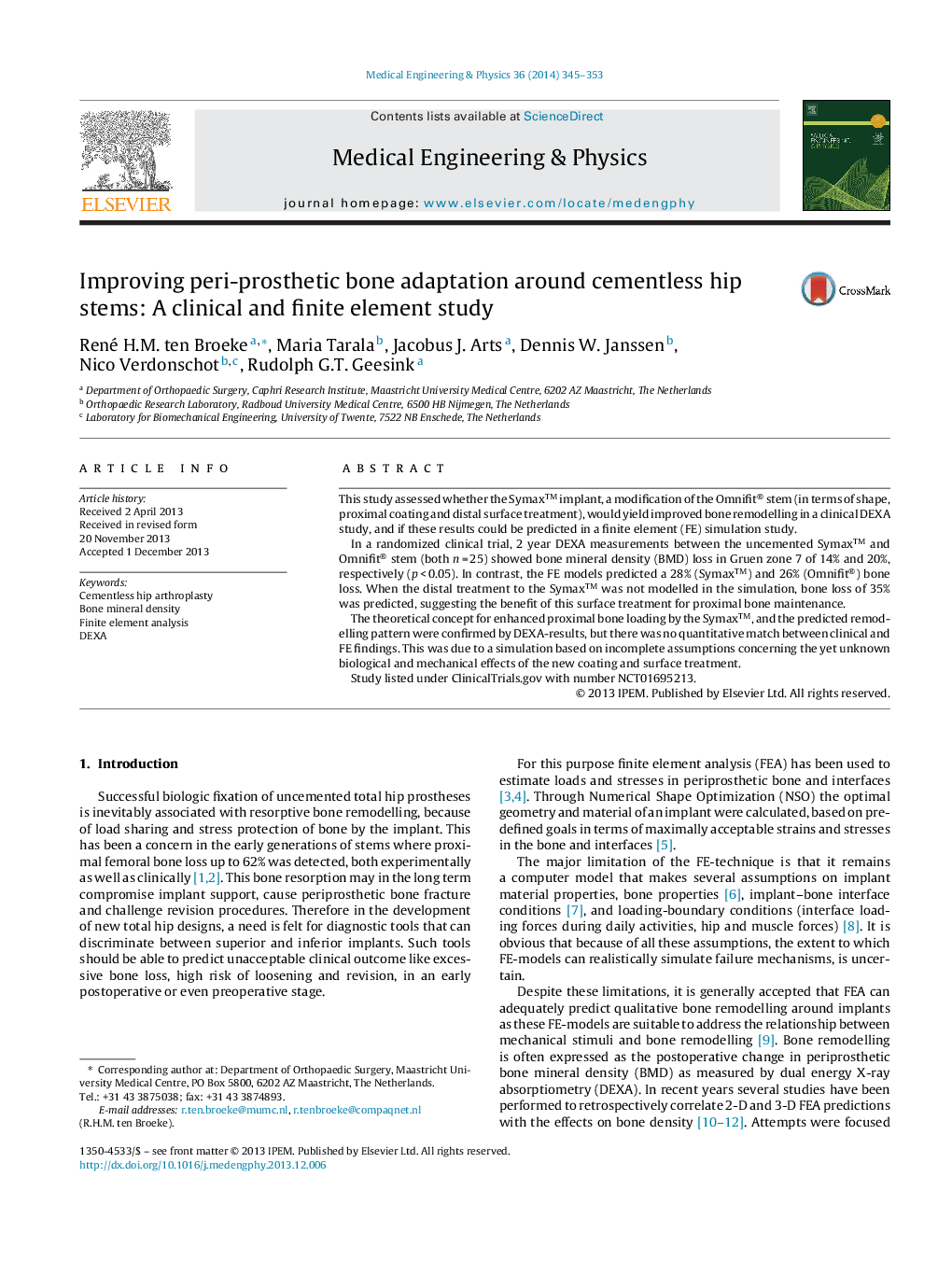| Article ID | Journal | Published Year | Pages | File Type |
|---|---|---|---|---|
| 876019 | Medical Engineering & Physics | 2014 | 9 Pages |
This study assessed whether the Symax™ implant, a modification of the Omnifit® stem (in terms of shape, proximal coating and distal surface treatment), would yield improved bone remodelling in a clinical DEXA study, and if these results could be predicted in a finite element (FE) simulation study.In a randomized clinical trial, 2 year DEXA measurements between the uncemented Symax™ and Omnifit® stem (both n = 25) showed bone mineral density (BMD) loss in Gruen zone 7 of 14% and 20%, respectively (p < 0.05). In contrast, the FE models predicted a 28% (Symax™) and 26% (Omnifit®) bone loss. When the distal treatment to the Symax™ was not modelled in the simulation, bone loss of 35% was predicted, suggesting the benefit of this surface treatment for proximal bone maintenance.The theoretical concept for enhanced proximal bone loading by the Symax™, and the predicted remodelling pattern were confirmed by DEXA-results, but there was no quantitative match between clinical and FE findings. This was due to a simulation based on incomplete assumptions concerning the yet unknown biological and mechanical effects of the new coating and surface treatment.Study listed under ClinicalTrials.gov with number NCT01695213.
